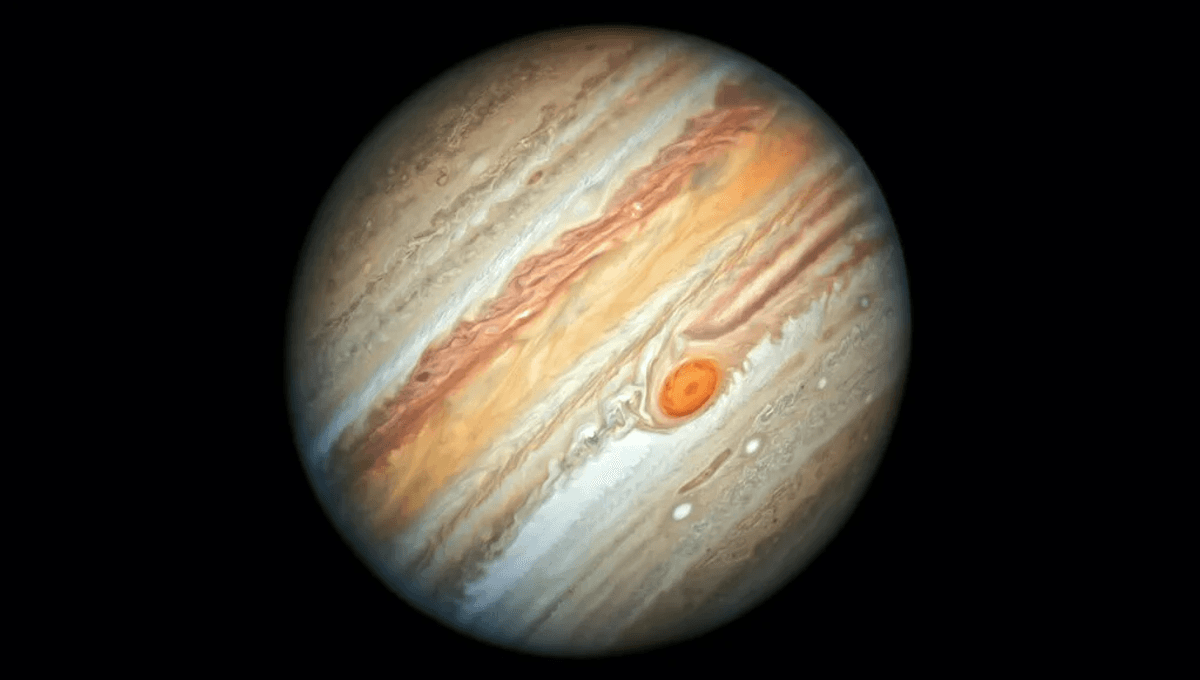
The Great Red Spot is a storm larger than our whole planet. It is clearly visible on the Southern Hemisphere of Jupiter, even to small telescopes, and we have been observing it for centuries. It became clear in the last few years that it is shrinking. Now, new research suggests that the cause of this is a change in diet.
Simulations suggest that the growth of the larger storm depends on continuously incorporating smaller storms that get too close, adding in this way to the Great Red Spot. But lately, there has been a decline in small storms, and so too the Great Red Spot has declined.
Latitudinally, so north to south, the Spot has not changed much since the late 19th century. However, its longitudinal extent has contracted from about 40 degrees in the late 1800s to 14 degrees in 2016, when NASA’s Juno entered orbit around the planet.
The team used 3D simulations of the planetary atmosphere to work out what might be driving the Great Red Spot. Some of these simulated the Spot with smaller storms of varying frequency and intensity. Others did not have the smaller storms. The simulation revealed that the Spot grows in the presence of smaller storms.
“We found through numerical simulations that by feeding the Great Red Spot a diet of smaller storms, as has been known to occur on Jupiter, we could modulate its size,” lead author Caleb Keaveney, a graduate researcher at Yale, said in a statement.
The base of the research is actually Earth’s weather. While our planet hasn’t got a storm that has survived for hundreds of years, there are larger systems like the heat domes that are influenced in their longevity by smaller weather systems. If it can happen on Earth, it might happen on Jupiter – and maybe vice-versa.
“Our study has compelling implications for weather events on Earth,” Keaveney said. “Interactions with nearby weather systems have been shown to sustain and amplify heat domes, which motivated our hypothesis that similar interactions on Jupiter could sustain the Great Red Spot. In validating that hypothesis, we provide additional support to this understanding of heat domes on Earth.”
The team now plans to refine the simulation to maybe even work out how the Great Red Spot came to be, another enduring mystery of this fascinating weather event.
The study is published in the journal Icarus.
Source Link: Jupiter’s Great Red Spot Is Shrinking Due To A Possible Change In Diet